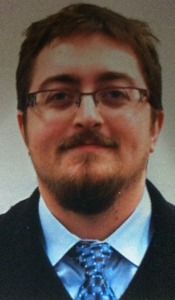Program Information
Feasibility of External Beam Treatment Field Verification Using Cherenkov Imaging
P Black*, Y Na , C Wuu , Columbia University, New York, NY
Presentations
SU-G-IeP4-6 (Sunday, July 31, 2016) 5:30 PM - 6:00 PM Room: ePoster Theater
Purpose: Cherenkov light emission has been shown to correlate with ionizing radiation (IR) dose delivery in solid tissue. In order to properly correlate Cherenkov light images with real time dose delivery in a patient, we must account for geometric and intensity distortions arising from observation angle, as well as the effect of monitor units (MU) and field size on Cherenkov light emission. To test the feasibility of treatment field verification, we first focused on Cherenkov light emission efficiency based on MU and known field size (FS).
Methods: Cherenkov light emission was captured using a PI-MAX4 intensified charge coupled device(ICCD) system (Princeton Instruments), positioned at a fixed angle of 40° relative to the beam central axis. A Varian TrueBeam linear accelerator (linac) was operated at 6MV and 600MU/min to deliver an Anterior-Posterior beam to a 5cm thick block phantom positioned at 100cm Source-to-Surface-Distance(SSD). FS of 10x10, 5x5, and 2x2cm² were used. Before beam delivery projected light field images were acquired, ensuring that geometric distortions were consistent when measuring Cherenkov field discrepancies. Cherenkov image acquisition was triggered by linac target current. 500 frames were acquired for each FS. Composite images were created through summation of frames and background subtraction. MU per image was calculated based on linac pulse delay of 2.8ms. Cherenkov and projected light FS were evaluated using ImageJ software.
Results: Mean Cherenkov FS discrepancies compared to light field were <0.5cm for 5.6, 2.8, and 8.6 MU for 10x10, 5x5, and 2x2cm² FS, respectably. Discrepancies were reduced with increasing field size and MU. We predict a minimum of 100 frames is needed for reliable confirmation of delivered FS.
Conclusions: Current discrepancies in Cherenkov field sizes are within a usable range to confirm treatment delivery in standard and respiratory gated clinical scenarios at MU levels appropriate to standard MLC position segments
Contact Email:

